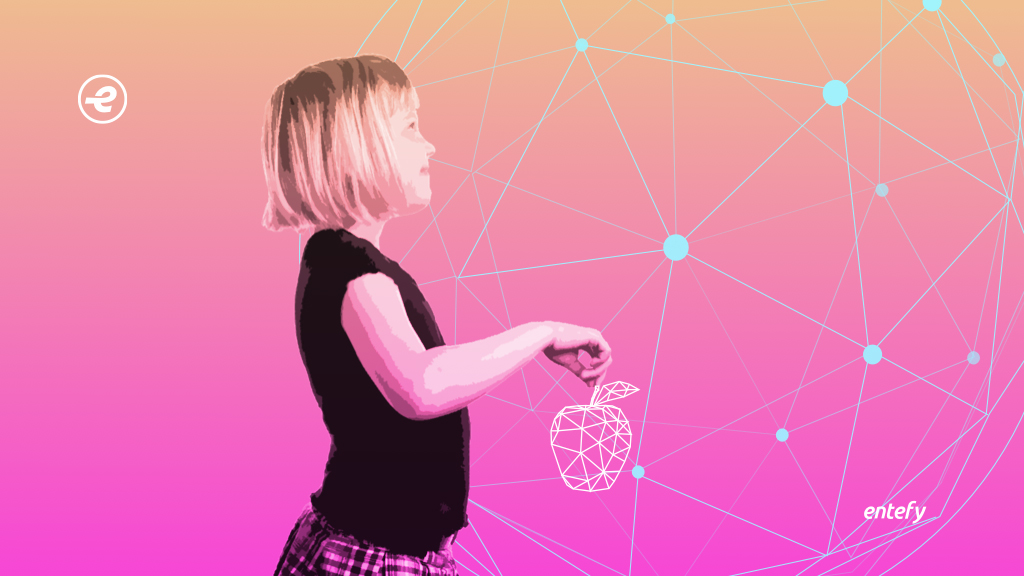K-12 educators are deep in the midst of re-thinking the design of the classroom and the responsibilities of the teacher within it. The Internet brought a rush of new educational resources and technologies, like high-quality, free instructional videos from Khan Academy (which has 2.9 million YouTube subscribers) and crowdsourced lesson plans from nonprofit websites like ReadWriteThink and Teacher.org. Deciding on the best way to integrate these resources into schools has become another factor in the perpetual discussion about how to improve American public school education.
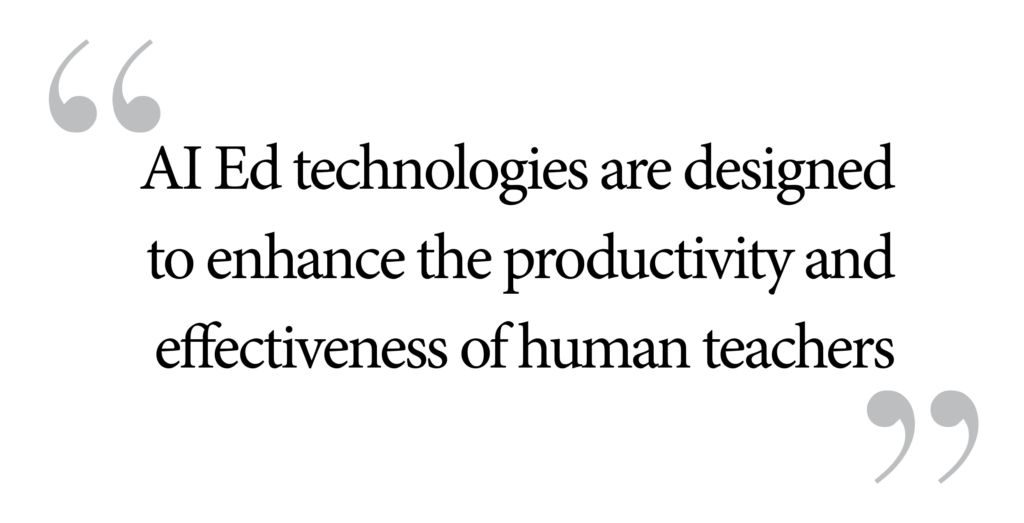
As these new technologies made their way into schools, the phrase “blended learning” was coined to describe education environments where the traditional teacher-led classroom is augmented by digital media and online resources. As schools reconfigure their classrooms around blended learning, the role of the teacher is transitioning from “the sage on the stage” to the “guide on the side.” But where does this transition stop? What role will the teacher play in the classroom of tomorrow?
Don’t answer yet. Because a game-changing new force has arrived on the scene: artificial intelligence. With the potential to disrupt education far more pervasively than the Internet, educators, parents, and students need to consider what role AI should play in the classroom. It’s a timely question and the answers could hold revolutionary changes in how our children learn.
A VISION OF TOMORROW’S CLASSROOM
Imagine that you’re standing in the middle of a classroom. At first glance, nothing appears out of the ordinary. Desks are neatly arranged in small groups, books line the shelves, and motivational posters hang on the walls. A teacher speaks from the front of the room, delivering an enthusiastic lecture on the American Civil War.
But when you look at the students, the picture changes. They’re tapping and swiping at tablets, taking notes that will be compiled into personal databases by automated learning companions. Individual students are being continuously assessed and receive personalized real-time learning plans. The bell rings, and students file out of the classroom on their way to meet with AI-powered virtual tutors that reinforce the concepts taught in school that day.
The question of whether artificial intelligence has a place in education has been discussed in academic circles for the past 30 years. But it is no longer a theoretical exercise. Many experts believe that AI applications are best used to augment the classroom experience, while some educators fear that increased reliance on computer programs is premature or will marginalize the role of human teachers. Like computers and the Internet, the question isn’t whether AI is here to stay, it’s only a matter of “how.”
THE HUMAN FACTOR
Most of us can name a teacher who had a memorable impact on our lives. A teacher who excited our interest in the subject that later became our career. Or turned us on to a book that we treasure today. That one special teacher who touched our lives and shaped our educational experience.
Our individual memories are confirmed by data about teachers as a group. Research shows that teachers are considered a highly respected profession, ranking 6th on the public’s list of most respected careers. They earn this esteem by playing a constantly shifting series of roles as leaders, mentors, administrators, proctors, and guides. So it is worth looking at what specifically human teachers contribute to the classroom:
“High-quality teachers guide their students through activities and projects that stretch them to analyze, synthesize, and apply what they have learned across academic subjects and into the real world. They provide personalized, qualitative feedback to help students develop their critical and creative thinking. They create a classroom culture that intrinsically motivates students by honoring their hard work and by making academic achievement socially relevant.”
And through these activities, teachers build the bridge from learning to living.
Students’ face-to-face interactions with teachers are also credited with helping students develop “21st century skills” including cognitive abilities like problem solving and critical thinking, and other characteristics like determination and outlook.
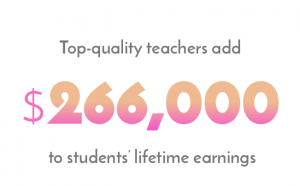
Through their own behavior in class, human teachers model behavioral norms like resilience and emotionally appropriate behaviors. Research into observational learning shows that modeling behaviors has both instructive and corrective benefits, helping students develop and fine-tune behaviors ranging from proper reactions to mistakes, moderating aggression, and accepting constructive criticism.
These core contributions are central to arguments that human teachers are indispensable. Looking at the importance of teachers from another angle, Harvard economists concluded that top teachers make life-long contribution to their students by improving test scores and college attendance rates, reducing teenage pregnancy rates, and generating $266,000 in added lifetime earnings (compared to a low-quality teacher).
THE LIMITS OF TODAY’S “AI ED” OFFERINGS
As it stands today, most existing AI Ed technologies are designed to enhance the productivity and effectiveness of human teachers across a wide range of classroom activities. Instructors can use software to automate grading on multiple-choice assignments and essays. One such AI system from EdX, the education nonprofit formed by Harvard and MIT, provides essay-grading software that assesses students’ work and provides instant feedback designed to improve writing skills.
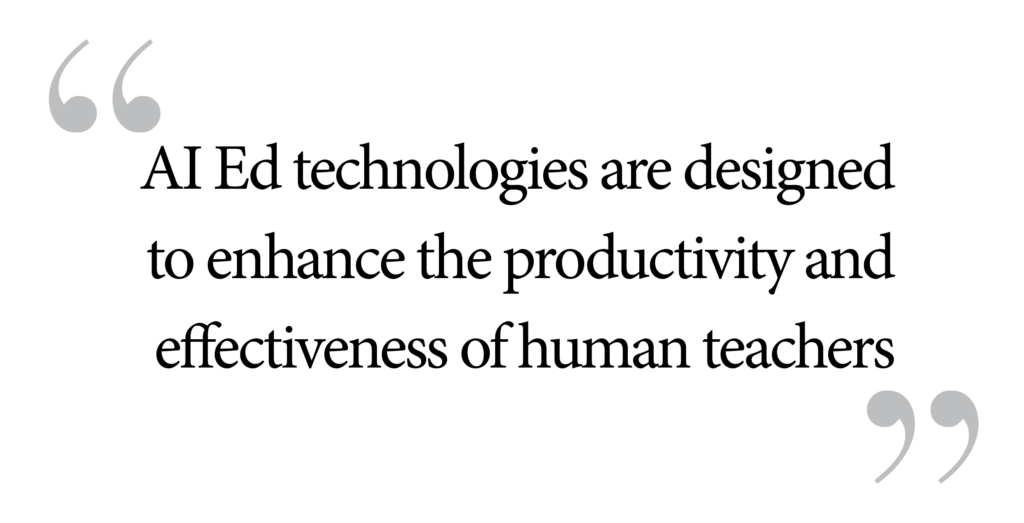
AI systems called intelligent tutoring systems (ITS) provide supplemental instruction and guidance so that students gain practice in targeted subject areas and obtain deeper knowledge of the concepts being learned. The systems use Big Data techniques and machine learning to deliver personalized, individually optimized learning.
To teach physics, for example, an ITS system presents the core theory and demonstrates how to solve different types of problems. The system monitors the student’s responses to evaluation questions, can answer questions the student asks of it, and uses a real-time assessment of the student’s knowledge to determine the best path to follow towards mastery of the subject.
These early ITS systems are already having an impact. Research shows that intelligent tutoring systems’ use of machine learning to adjust teaching approaches as they gather data about students produce higher test results compared to large-group instruction.
AI is making other in roads as well. A company called CTI has developed an AI system that uses a teacher’s syllabus to assemble the contents of a customized textbook. In the educational app world, there are various hybrid systems that teach subject-specific skills and pair learners with human tutors who provide updates and analyses to their parents.
But the true impact of AI still lays over the horizon.
THE POSSIBILITIES OF TOMORROW’S AI-POWERED EDUCATION
Looking ahead, AI Ed programs are being designed as standalone technologies that could serve as substitutes for human intelligence in certain areas. These systems rely on three types of modeling: pedagogical, domain, and learner. Which is to say that the systems know how to teach effectively, understand the subject being taught, and have knowledge of the student being assessed.
Learner-focused AI makes use of machine learning techniques to maintain real-time knowledge of students’ progress and provide them tailored feedback and lessons. In a report from Pearson and the University College London, the current state of learner model AI technology is described as already quite advanced:
“Deep analysis of the student’s interactions is also used to update the learner model; more accurate estimates of the student’s current state (their understanding and motivation, for example) ensures that each student’s learning experience is tailored to their capabilities and needs, and effectively supports their learning.”
Advancements in AI Ed are taking place outside the learner, pedagogical, and domain models, in the area of student emotional development. Researchers have developed open learner models (OLM) focused on the social, emotional, and meta-cognitive aspects of learning. Metacognition refers to an individual’s thoughts about their own thoughts, which in the context of the classroom includes the awareness of how well one is learning a subject. Research shows that OLMs “serve several purposes, most being strongly linked to metacognitive activities of reflection, monitoring progress, planning both in the short and long term, and aiding the learner in taking responsibility and control of their own learning and progress.”
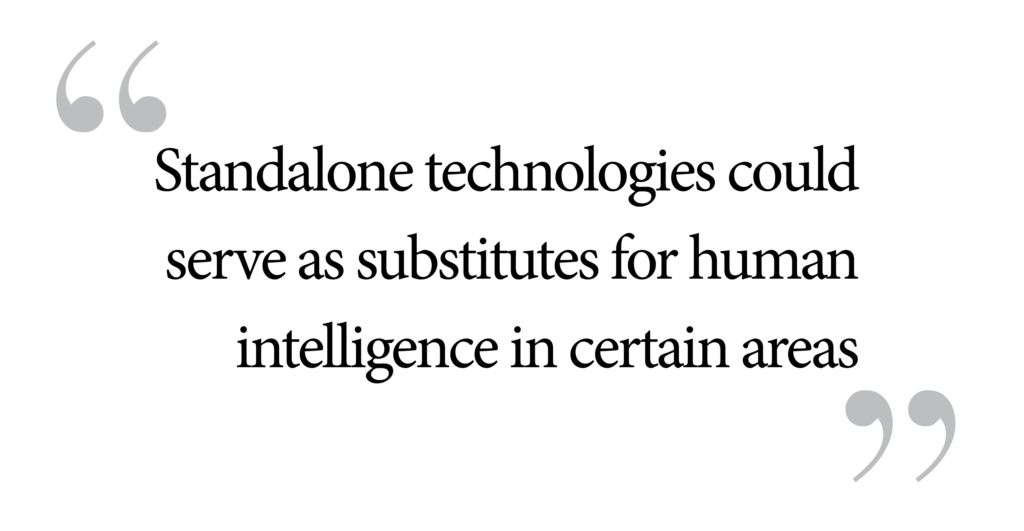
This last part is important, because this is the point at which AI Ed applications make the leap from being learning supplements to standalone instructors. Because when an AI system is able to collect, analyze, and make use of information about a student’s emotional state, a key role of the human teacher has been co-opted by an intelligent machine.
THE IMPORTANCE OF DELIBERATE USE OF ARTIFICIAL INTELLIGENCE
Today there is no call for a wholesale replacement of teachers by AI. After all, those memories we have of that one special teacher are confirmed by academic research that supports the need for a facilitator in the classroom who is empathetic and trained in instruction techniques.
AI adds unprecedented new capabilities to the educational environment, from personalized learning plans to real-time testing and assessment, but the impact from these capabilities on the classroom and teachers remains to be seen. No single existing AI application is sufficiently advanced to warrant the replacement of a teacher.
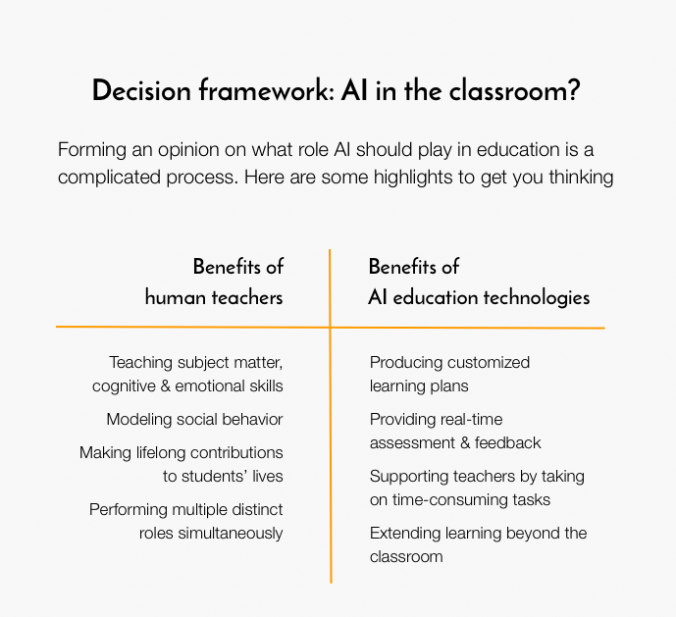
The best use of AI Ed technologies may be to supplement and extend the abilities of the teacher. By freeing teachers from rote time-consuming activities like grading and recordkeeping, teachers have more time to focus their energies on the individual needs of their students, bringing creativity and empathy into the classroom.
Yet it must be acknowledged that human history demonstrates again and again our propensity to adopt any and all tools we create for ourselves. And if AI Ed systems can be conceived as all-out teacher replacements, eventually such a system will come into existence. At that point, the belief in the indispensable role of the human teacher will go head-to-head with passionless cost-benefit analyses by perennially budget-constrained school boards.
So then, the very complex question facing educators, students, and parents is this: How sophisticated does AI need to become before we give it the lead role in the classroom of tomorrow?
